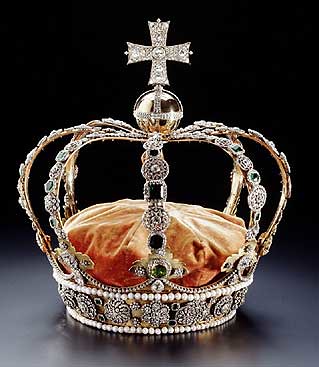Prince Charles, may be the oldest Prince of Wales on record, however, he cannot beat the record of another heir apparant. In what is today the Indian state of Kerala Puthiya Kovilakathu Sree Manavedan Raja, the Zamorin of Calicut, was 90 years old, when he ascended the throne in 2003. On the occassion of his passing way the Indian daily newspaper The Hindu reported, "Kunhianiyan, as he was lovingly referred to, died on Wednesday in a hospital here, barely a week after completing 100 years on March 22". India may have a republican constition, but the numerous royal families in India still play an important role in the cultural, religious and political life of the country.
The Zamorin of Calicut with Minister of State for Human Resource Development Shashi Tharoor (Congress Party), former UN Under-Secretary-General for Communications and Public Information.
"The Zamorins once ruled this port city, which had a prosperous harbour on the medieval Spice Route. Kunhali Marakkars, the admirals of the Zamorin, thwarted attempts by the Portuguese to dominate the region. But during the British period, the Zamorins were reduced to the position of landlords. But they retained their patronage of temples and mosques — and popular esteem.
"A fan of [cricket player] Sachin Tendulkar and a Kathakali [Malayalam theatre] connossieur, an Ancient British History buff, author and an avid reader of The Hindu, Manavedan Raja was a simple man who took time to listen to all, and promoted communal harmony."
Zamorin of Calicut, P.K.S.Raja
Dr. E.K. Govinda Varma Raja wrote a biography of the Zamorin, titled The King Without A Crown, who as an officer of the Post and Telegraph Department, travelled widely, and had extended postings in the eastern parts of India, Pakistan and Bangladesh, when it was still the British Raj. After retirement as a Deputy General Manager with BSNL (Bharat Sanchar Nigam Limited, an Indian state-owned telecommunications company), he spent his years travelling the world till he ascended the throne in 2003.
As Zamorin he had few powers, but he was trustee to 40 temples from Chemanchery to Palakkad. He had a permanent seat on the Guruvayur Sree Krishna Temple’s managing committee. His family managed the Zamorin’s Guruvayurappan College, where the P.K.S Raja Centenary Research Centre, built at a cost of Rs. 1.5 crore (AU$ 265,000), was scheduled to be inaugurated this month.
Kerala's royal families have a very special succession law: The new rulers are always the sons of the deceased ruler's sister, never his own sons. This matrilinear line of succession is still in use to determine the Maharaja's of Travancore and Kochi. Were this succession law in place in Britain (and therefore in Australia) it would mean that Prince Charles' successor would be Princess Anne's son, Peter Philips.




















